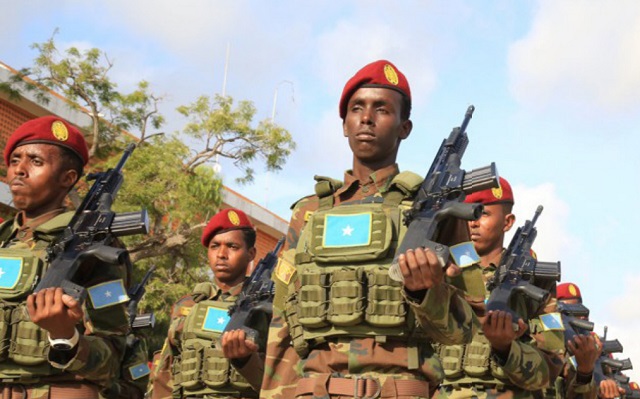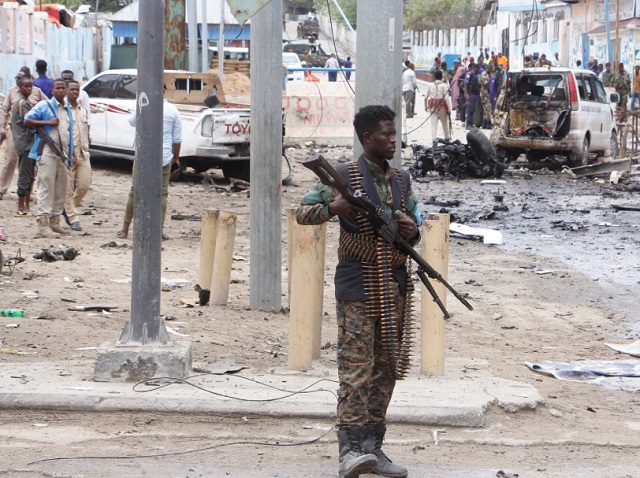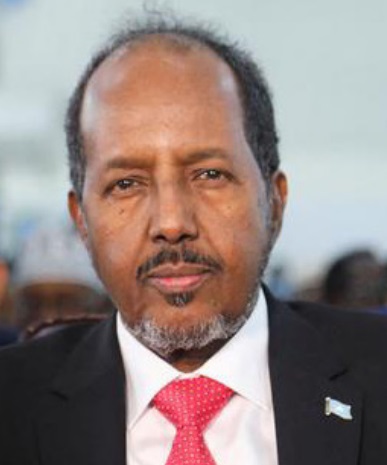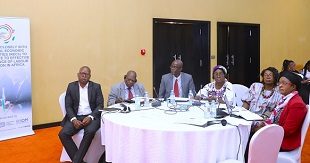
America back in Somalia
Kampala, Uganda | THE INDEPENDENT | On May 03, Al Shabaab fighters stormed an African Union base in near Ceel Baraf, a village some 160 kilometres (100 miles) northeast of the Somalian capital Mogadishu and killed at least 10 Burundian peacekeepers and wounded 25 in heavy fighting. The Burundi’s army said 20 Al Shabaab militants were also killed.
It was the first such attack on a peacekeeping base since the AU Transition Mission in Somalia (ATMIS) replaced the previous AMISOM peacekeeping force on April 1. Under a UN resolution approving its creation, ATMIS is projected to gradually reduce staffing levels from nearly 20,000 soldiers, police and civilians to zero by the end of 2024.
ATMIS is made up of the same troops as AMISOM from Burundi, Djibouti, Ethiopia, Kenya and Uganda. Its mission is to help Somali forces take responsibility for security in a country.
A week later, on May 11, at least four people were killed and seven injured in a suicide attack near Mogadishu airport. The airport was at the time designated as a high-security bastion in which the presidential elections would be held on May 15, just four days away then.
The suicide car bomber detonated just as presidential candidates were heading into the airport to address MPs. None of the lawmakers was killed. The Al-Qaeda-affiliated militant group al Shabaab claimed responsibility for the attack.
On May 15, Somalia’s parliament elected a new president, Hassan Sheikh Mohamud, to replace the embattled Mohamed Abdullahi.
On May 16, U.S. President Joe Biden ordered the redeployment of American troops to Somalia. The move reverses an order from Biden’s predecessor Donald Trump, who in late 2020 pulled nearly all U.S. forces from Somalia
On May 17, newly elected President Hassan Sheikh Mohamud thanked his U.S. counterpart for ordering the redeployment of American troops to Somalia.
“The US has always been a reliable partner in our quest to stability and fight against terrorism,” the president’s office posted on Twitter.
The timeline of the moves by al-Shabaab and Presidents Joe Biden and Hassan Sheikh Mohamud have provided interesting analysis about coincidences and motives behind them.
How to handle the Somalia counterterrorism campaign has been a major question, for the U.S., the African Union and states contributing peace-keeping forces, and international agencies such as the United Nations. Some have been concerned about legal and policy issues while others have dwelt on logistical challenges.
The United States has pursued a two-pronged approach in Somalia by providing financial and logistical support to AMISOM and conducting counterterrorism operations, including drone strikes and special operations forces raids, against suspected al-Shabaab militants.
Since 2007, the United States has provided more than half a billion dollars to train and equip African Union forces battling al-Shabaab.

Time for talks
Al Shabaab fighters controlled Mogadishu until 2011 when they were driven out by AU troops. They are opposed to Somalia’s federal government and have been fighting the Somali government and African Union Transition Mission since 2007.
Experts say that although al-Shabaab is seen as a hardline organisation, it has shown signs in recent times that it wants to be a political actor in Somalia.
“It may be willing to come to the negotiating table,” the expert report says, “Relying on Somalia’s clan elders and traditional conflict resolution processes could provide a foundation for reconciliation.”
Meanwhile, AMISOM troop-contributing countries are reportedly losing patience over the unending conflict.
For newly elected President Hassan Sheikh Mohamud, experts say, his return to power comes at a time when Somalis are reportedly increasingly in support of dialogue to end the conflict; including with the al-Shabaab.
The Federal Government of Somalia (FGS) which he now heads has in the past shown willingness to work with the U.S. But it has proven incapable of effectively combating threats on its own, resolving long-standing political fissures, or establishing effective governance.
Mohamed Abdullahi Mohamed—also known as Farmaajo— plunged the country into a political crisis extended his four-year term in mid-April 2021, leading to a breakdown of talks between the opposition alliance and the central government. Violence broke-out pro-government and opposition forces clashed in Mogadishu.
The al-Shabaab capitalise on such local grievances, confusion, and coercion to remain relevant and in control of the agenda. The Somalia governments, has been year-in-year-out been ranked among the worst in the world for corruption. That means although the international community has dramatically increased aid to Somalia, it is unlikely to lead to meaningful change. Experts say governance reform is needed and the resolution of divisive politics and forging a government that meets the needs of Somalia’s complex clan dynamics.
“All of this will require the Biden administration to consider greater investments in civilian aid, deploying experts to Somalia, and engaging in smart diplomatic support to Somalia’s political reconciliation alongside any efforts to counter al-Shabaab militarily,” say the experts.
They add: “To succeed, political reconciliation will have to go beyond the government’s rival factions and include al-Shabaab. This will not be an easy process, with research showing it will likely take many rounds of negotiations over several years”.
“The United States is thus stuck in an awkward position of assisting local forces that are unable to effectively address the threat they face – but who would likely suffer if U.S. support were withdrawn,” says a report in Just Security; an online forum on national security, foreign policy, and rights based the Reiss Center on Law and Security at New York University School of Law.

America’s objectives
The primary U.S. objective in Somalia is to minimise the ability of al-Shabab and other violent groups to destabilise Somalia or its neighbors and harm the United States or its allies.
In addition to the troops redeployment, Biden also approved a request by the Pentagon to directly target suspected leaders of al-Shabab, The New York Times reported.
According to the Pentagon, the troops deployed in Somalia will not be used in combat operations, but they will be repositioned around Africa to train and support Somali forces fighting against al-Shabab.
“Our forces are not now, nor will they be, directly engaged in combat operations,” said Pentagon press secretary John Kirby. “The purpose here is to enable a more effective fight against al-Shabab by local forces.”
Al-Shabab’s continued attacks degrade the Somali government’s ability to both provide security and alleviate the dire humanitarian situation in the country, and its influence in Somalia undermines the United States’ efforts to prevent the use of Somalia as a refuge for international terrorists.
The re-established U.S. troop presence would involve fewer than 500 troops engaged in a “small persistent” effort in Somalia, a senior American official told reporters on May 16.
The troops withdrawn from Somalia were rebased in Kenya and Djibouti. The U.S. military command for Africa continued to conduct drone strikes in Somalia against al-Shabaab targets.
Experts say by reinserting U.S. troops, Washington will reduce the risks involved in back-and-forth mobilisations of forces that have been conducting counterterrorism operations inside Somalia.
The move, they say, would boost efficiency and the effectiveness of special operators, and allow for uninterrupted training periods with local partners.
The official said the decision taken by Trump to withdraw US troops from Somalia went against the advice of senior military leaders and since then al-Shabaab had only grown stronger.
This year, up to 17 incidents of explosive violence in Somalia attributed to Al Shabaab. Up to 113 civilians have been killed and 223 injured. Figures for soldiers and militants killed are not available.
Following the October 1993 `Black Hawk Down’ shock, U.S. policymakers have favoured their troops staying out of Somalia.
Since then, Somalia has been called the “overlooked theater in the U.S. counterterrorism campaign” with only the occasional drone strikes and military advisors assisting Somali partner forces.
The Biden administration has had to walk a thin-rope between staying away even as the al-Shabaab threat and activities have grown since their troop exit in 2020 and their policy commitment to reduce global U.S. counterterrorism operations.
The administration has debated how to balance the threat posed by al-Shabaab against their commitment to end so-called “Forever Wars.”

Not the best time
According to the New York Times, some officials say now is not the best time to return to Somalia and battle al-Shabaab which, some say, is at its strongest in years. But others say al-Shabaab strength is overhyped.
Some Somalia analysts are looking at getting a sort of political settlement with al-Shabaab, especially as the Federal Government of Somalia (FGS) cannot win the fight.
The Trump administration decided to withdraw U.S. forces from Somalia after failing to negotiate with the al-Shabaab in the way it did with the Taliban in Afghanistan.
Experts say that U.S. policy in Somalia should consider not only how to address any ongoing terrorist threat but also how best to stabilise the long-troubled country. But the U.S’s militarised approach appears unlikely to produce that outcome.
It is not clear how the Biden administration plans to re-engage. The U.S. military reportedly favoured deployment of more commandos to Somalia.
Experts say al-Shabaab too is gaining strength. They say, in Somalia (and elsewhere in Africa), the U.S. “has been caught in an endless loop of strikes and counter-strikes and frustratingly slow capacity building”. They say the U.S. strategy offers little prospect of decisively defeating the enemy or undermining its support.
Timelines
U.S. military involvement in Somalia
- 1993: Disastrous Battle of Mogadishu in October: 19 U.S. soldiers were killed, 73 wounded, one captured and two Black Hawk helicopters were downed and destroyed. Hundreds of Somaliswere killed in the battle. President Bill Clinton removed most U.S. forces.
- Early 1990s: Humanitarian intervention as part of a United Nations (U.N.) effort to provide famine relief
- Early 2000s: Somalia sinks deeper into chaos. Islamic Courts Union (ICU), a fundamentalist organisation, gains prominence.
- 2006: Islamic courts claims control over Mogadishu and central and southern Somalia.
- 2006: Ethiopia launches offensive and defeats Islamic Courts. But ICU’s youth or al-Shabaab regroup.
- 2007: African Union authorizes peacekeeping force (AMISOM) to prop-up Somali Transitional Federal Government (TFG).
- Ugandan contingent is biggest under AMISOM, with support from Burundi and Ethiopia, then Kenya and Djibouti.
- 2008: The U.S. designates al-Shabaab a foreign terrorist organisation.
- 2010: al-Shabaab bomb a World Cup viewing party at Kyadondo grounds in Kampala killing 74 and wounding 85.
- American Omar Hammami produces recruitment videos for al-shabaab.
- 2011: U.S. forces capture Ahmed Abdulkadir Warsame; a coordinator between al-Shabaab and al-Qaeda in the Arabian Peninsula (AQAP).
- Early 2012: al-Shabaab emir Ahmed Abdi Godane swears formal allegiance to al-Qaeda
- 2013: al-Shabaab assaults Westgate Mall in upscale Nairobi in Kenya killing 67 and wounding 175. The U.S. intensifies support to AMISOM, including conducting air strikes in what the Pentagon termed “collective self-defense” of its partners in Somalia. al-Shabaab adopts hit and run guerrilla tactics against AMISOM rather than attempting to defend territory.
- 2015: al-Shabaab lay siege on Kenyan university, kill 147 people.
- 2017: Truck bombing in Mogadishu kills at least 587 people.
- 2016: Barack Obama administration designates al-Shabaab an “associated force” of al-Qaeda making room more extensive lethal operations against the group.
- Early 2017: President Trump declares parts of Somalia an “area of active hostilities,” which meant that more relaxed war-zone targeting rules applied than had been the case under the Obama-era.
- 2017: President Trump delegates greater authority to operational commanders to conduct strikes against a broader range of targets in Somalia. The U.S strikes more than doubled to 61 in 2019 and 49 in 2020. Trump deployed additional advisors, up to 700.
- 2017: Navy seal killed in ground operation in Somalia.
- 2019: al-Shabaab attacks luxury hotel in Kenya
- 2020: al-shabaab attacks U.S. airfield in Kenya killing one U.S. soldier and two contractors.
- 2020: Nearing end of his presidency, Trump ordered withdrawal of U.S. forces from Somalia.
- 2021: In July and August, Biden authorizes strikes in Somalia.
- 2022: The U.S. launches more strikes on al-Shabaab.
- 2022: On May 16, U.S. President Joe Biden ordered the redeployment of American troops to Somalia
****
 The Independent Uganda: You get the Truth we Pay the Price
The Independent Uganda: You get the Truth we Pay the Price


